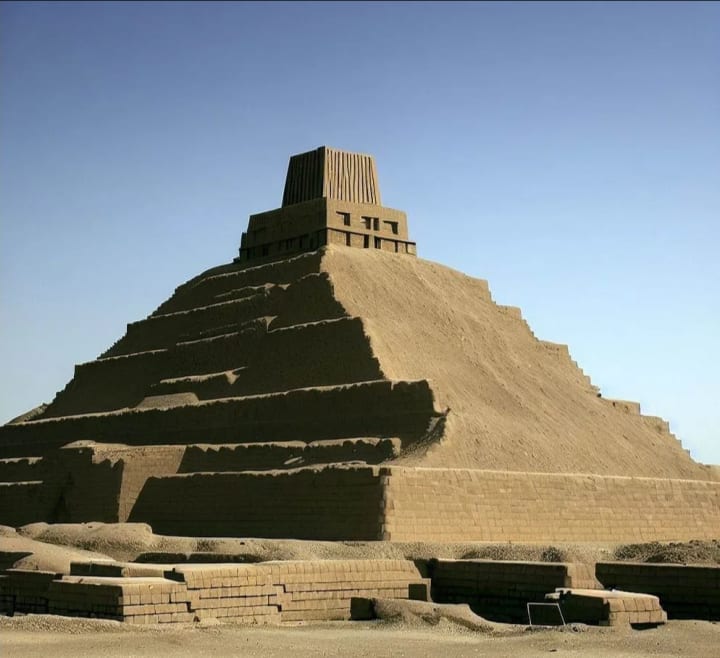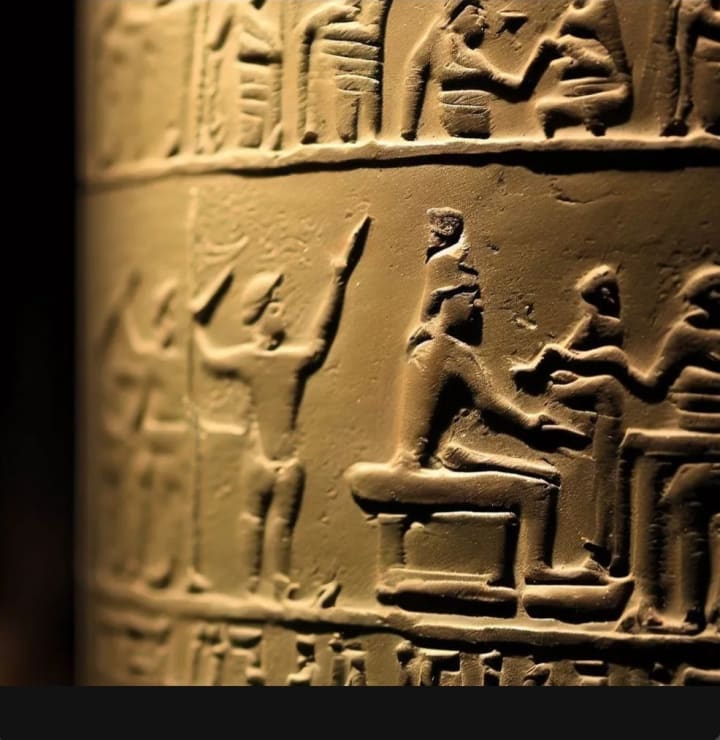Anak, king Of The Nephilim
The first mention of Anak is in Numbers 13, when Moses sends twelve spies to scout out the land of Canaan.

Exploring the Mysteries of Anak and the Anunnaki: Giants of Legend and Myth
Tales of giants have permeated human history, capturing our collective imagination and leaving us in awe. Among these stories are the legends of Anak and the Anunnaki, figures that stand at the crossroads of myth, history, and mystery. Could Anak and the old-world giants have been another human race, or perhaps they were the Anunnaki from Sumerian mythology? Let's delve into this fascinating topic with enthusiasm and an open mind!
Anak, a name that reverberates through biblical history, is often linked to a race of giants known as the Anakim. These formidable beings, described as descendants of the Nephilim, a term used in the Bible to describe the offspring of the 'sons of God' and the 'daughters of men ', have sparked endless debate among scholars and enthusiasts. Their presence in the land of Canaan was a pivotal part of the Israelites' journey and conquest.
On the other hand, the Anunnaki are a pantheon of deities from ancient Mesopotamian cultures, particularly associated with Sumerian mythology. These divine beings were said to be the offspring of An, the god of the sky, and Ki, the earth goddess. An and Ki were among the most important deities in the Sumerian pantheon, representing the fundamental forces of the universe. The Anunnaki, as their offspring, played a crucial role in shaping human destiny, decreeing fates, and overseeing various aspects of human existence.

The connection between Anak and the Anunnaki is a subject of intrigue. Some propose that the giants mentioned in biblical texts could reflect Anunnaki's influence on early human civilizations. The Anunnaki were often depicted as beings of great power and stature, with the ability to shape-shift and control the elements. This aligns with the giants' descriptions from Anak's tales, where they are often portrayed as towering figures with immense strength and supernatural abilities. Could the stories of Anak's descendants and the mythological Anunnaki share a common origin? Or are they separate narratives that have intertwined over millennia? The possibility that these giants were another human race or even the Anunnaki themselves opens up a world of speculation and wonder. What if these legends are not just tales, but echoes of a shared history? What if the giants were more than just mythological beings, but actual entities that shaped our past?
While definitive answers may elude us, the legends of Anak and the Anunnaki continue to inspire and challenge our understanding of the past. They serve as a testament to humanity's enduring fascination with the extraordinary and the unknown. As we explore the depths of these ancient myths, the line between history and legend is not as clear-cut as we once believed. The ongoing debate about the connection between Anak and the Anunnaki is a testament to this, and it invites us to consider multiple perspectives and form our own opinions.
Anak The King
Anak is a figure in the Hebrew Bible who is said to be the forefather of a race of giants known as the Anakim. His name means “giant, long neck, necklace” in Hebrew, and he is described as a son of Arba, the founder of Hebron (Joshua 15:13). But who exactly was Anak, and what do we know about his descendants?
The first mention of Anak and his sons, Sheshai, Ahiman, and Talmai, is in Numbers 13 when Moses sends twelve spies to scout out the land of Canaan. The spies report that the land is flowing with milk and honey but is also inhabited by influential people, some of whom are descended from the Nephilim, a mysterious group of beings that are often translated as “giants” or “fallen ones” (Genesis 6:1-4). The spies say that they felt like grasshoppers in comparison to the sons of Anak, who were very tall and robust (Numbers 13:33).

However, not all the spies were intimidated by the Anakim. Caleb and Joshua, two faithful spies, urged the Israelites to trust in God and take possession of the land. They said that the Anakim were not invincible and that God would help them overcome them (Numbers 14:6-9). Unfortunately, most Israelites did not listen to them and rebelled against Moses and God. As a result, God punished them by making them wander in the wilderness for forty years until a new generation arose willing to enter the promised land (Numbers 14:26-35).
The Anakim are mentioned again in Deuteronomy 1:28 and 9:2, where Moses reminds the Israelites of their previous encounter with them and encourages them not to fear them. He says that God will go before them and destroy them as he did with the Amorites (Deuteronomy 1:29-31; 9:3-4). He also says that the Anakim were considered giants by other peoples, such as the Rephaim, another race of large stature that lived in Canaan (Deuteronomy 2:10-11; 3:11).
Joshua and the Israelites recorded the conquest of Canaan in the book of Joshua. There, we learn that Joshua defeated many kings and peoples in Canaan, including some of the Anakim. He drove them out from the hill country, from Hebron, Debir, Anab, and all the mountains of Judah and Israel. He left none except in Gaza, Gath, and Ashdod (Joshua 11:21-22). These three cities were later known as the territory of the Philistines, a formidable enemy of Israel.
The last mention of the Anakim in the Bible is in Judges 1:20, where we read that Caleb, one of the original spies who had faith in God, inherited Hebron as his portion. He drove out the three sons of Anak from there and gave his daughter Achsah as a wife to his nephew Othniel, who captured Kiriath Sepher (also called Debir).

The Anakim have fascinated many scholars and readers throughout history. Some have tried to explain their origin and nature by connecting them with other ancient sources or myths. For example:
– Some have suggested that Anak was derived from a Greek word meaning “ruler” and that he was a leader or king of a Canaanite tribe.
– Some have identified the Anakim with a group called “ly Anaq” or “people of Anaq” that appear in Egyptian texts from the Middle Kingdom (2055-1650 BC) as enemies of Egypt in Canaan.
– Some have associated the Anakim with Anax, a giant king of the Anactorians in Greek mythology.
– Some have linked the Anakim with Og, king of Bashan, who was also said to be a descendant of the Rephaim and had a bed made of iron that measured nine cubits long and four cubits wide (Deuteronomy 3:11). Og is also mentioned in Islamic tradition as Uj or Uj ibn Anaq (“Uj son of Anaq”), whose mother was Anaq bint Adam (“Anaq daughter of Adam”).
However, none of these theories are conclusive or widely accepted. The Bible does not give much detail about Anak or his descendants, except that they were formidable opponents of Israel. Perhaps their purpose was to test the faith and obedience of God’s people and demonstrate God’s power and sovereignty over all nations. Whatever the case, the story of Anak and the Anakim reminds us that nothing is impossible for God and that he can use anyone, even a grasshopper, to accomplish his will.
About the Creator
Cosmic Secrets
I specialize in writing and researching about history and ufology If you enjoy my work and would like to support me, you can visit my Patreon page. You will gain access to exclusive, content that I create.






Comments (2)
Wow I love to follow such history.
Fascinating history! 🌴